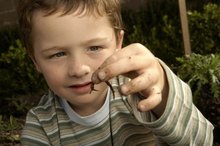How Long Does it Take for Food Poisoning to Set in?
Time Line for Food Poisoning
How long food poisoning takes to set in depends on the type of food poisoning. Generally, symptoms can set in within two to six hours after food has been consumed. But sometimes symptoms can appear within a few days or a few minutes. Illnesses caused by food poisoning can last up to 10 days. Some food poisonings can be fatal 1.
If you are experiencing serious medical symptoms, seek emergency treatment immediately.
- How long food poisoning takes to set in depends on the type of food poisoning.
- Generally, symptoms can set in within two to six hours after food has been consumed.
Fast-Developing Poisons
Can You Tell If Food Has Salmonella?
Learn More
Some food poisoning develops rather quickly, sometimes immediately after digestion or within a few short hours. Staphylococcus aureus is a form of food poisoning that is contracted through meat, seafood, salads, sandwich spreads and foods with a high salt content. The bacteria enter through the nose and throat and sometimes through the skin and superficial wounds. The poisoning can occur within four to six hours after these foods have been digested. Symptoms can include nausea, vomiting and diarrhea.
Clostridium botulinum is a bacteria that produces a spore that exists on little oxygen and produces a heat-sensitive toxin. It can be found in soils, plants, marine sediments and fish. The bacteria can be ingested through home-canned foods and can lead to blurred vision, respiratory distress and possibly death.
- Some food poisoning develops rather quickly, sometimes immediately after digestion or within a few short hours.
- The bacteria can be ingested through home-canned foods and can lead to blurred vision, respiratory distress and possibly death.
Slower-Developing Poisons
Other forms of food poisoning can take up to 12 to 24 hours to set in. Salmonella is one of the more well-known types of food poisoning and generally infects the intestines. Salmonella can be contracted through high-protein foods that are uncooked or undercooked. These include meat, poultry, fish and eggs. Salmonella can also be ingested from foods that have been contaminated from raw poultry or meat. Symptoms can include diarrhea, nausea, chills, vomiting and fever.
Vibrio parahaemolyticus is generally found in raw and cooked shellfish and fish. Symptoms of this bacteria include diarrhea, cramps, vomiting, headache and fever. Clostridium perfringens is a bacteria that is formed in heat-resistant spores and is found in dust, soil and the gastrointestinal tracts of animals and humans. The most likely culprit of digestion is through meat and poultry, sauces and gravies. Symptoms include cramps and diarrhea.
- Other forms of food poisoning can take up to 12 to 24 hours to set in.
- Salmonella can also be ingested from foods that have been contaminated from raw poultry or meat.
Related Articles
References
- AgriLife Extension: Bacterial Food Poisoning
- Centers for Disease Control and Prevention. Burden of Foodborne Illness: Findings.
- Switaj TL, Winter KJ, Christensen SR. Diagnosis and Management of Foodborne Illness. Am Fam Physician. 2015;92(5):358-65.
- Argudín MÁ, Mendoza MC, Rodicio MR. Food poisoning and Staphylococcus aureus enterotoxins. Toxins (Basel). 2010;2(7):1751-73. doi:10.3390/toxins2071751
- World Health Organization. Salmonella (non-typhoidal).
- FoodSafety.gov. Bacteria and Viruses. Public Affairs.
- Lindesmith L, Moe C, Marionneau S, et al. Human susceptibility and resistance to Norwalk virus infection. Nat Med. 2003;9(5):548-53. doi:10.1038/nm860
- CDC. 2006 Annual Listing of Foodborne Disease Outbreaks, United States.
- Kliegman: Nelson Textbook of Pediatrics, 18th ed.
- Long: Principles and Practice of Pediatric Infectious Diseases, 3rd ed.
- U.S. Food and Drug Administration Foodborne Pathogenic Microorganisms and Natural Toxins Handbook.
Writer Bio
This article was written by the CareerTrend team, copy edited and fact checked through a multi-point auditing system, in efforts to ensure our readers only receive the best information. To submit your questions or ideas, or to simply learn more about CareerTrend, contact us [here](http://careertrend.com/about-us).








